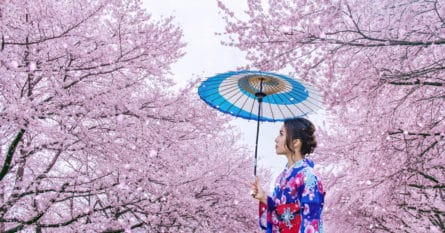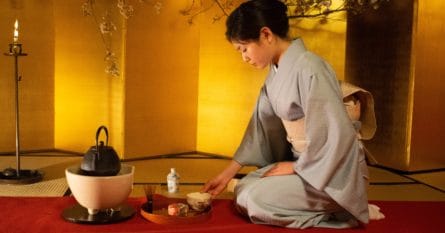Estimated reading time: 13 minutes
Discover the best places to visit in Japan, offering a blend of traditional culture, epic nature, and vibrant city energy.
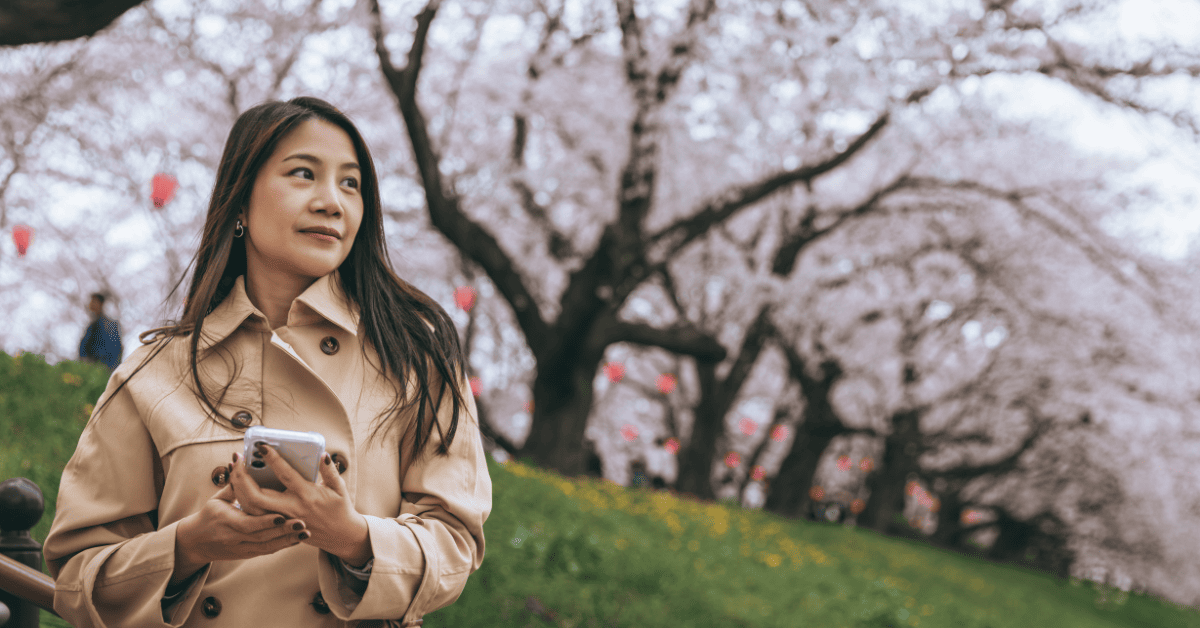
For travelers who value a balance between authentic traditions and the hyper-modern, few destinations can offer more than Japan.
Whether it’s cultural experiences, nature, food, technology or urban adrenaline, The Land of the Rising Sun boasts enough amazing travel features to make a ‘best of’ list near impossible. Nonetheless, we’ve done our best. Read on for our selection of the best places to visit in Japan, curated to offer a unique adventure that combines the best of all vibes.
Table of Contents
- Best Places to Visit in Japan for First Timers
- Best Places to Visit in Japan for Traditional Culture
- Best Places to Visit in Japan for Nature
- Best Places to Visit in Japan during Winter
- Best Places to Visit in Japan for City Life
- Explore Japan in Style
- FAQs About Best Places to Visit in Japan
Best Places to Visit in Japan for First Timers
Kyoto, Timeless Beauty
Once Japan’s capital city, Kyoto remains its epicenter for traditional culture. No visit to Japan in search of heritage would be complete without seeing it for yourself.
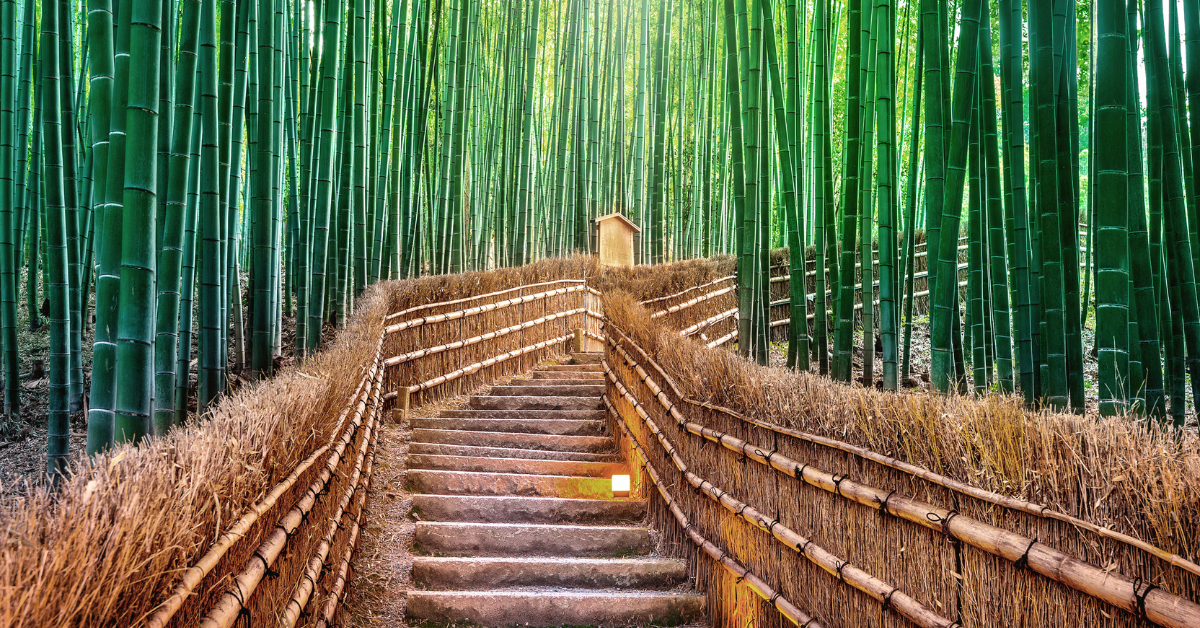
Perhaps most immediately striking is Kyoto’s time-capsule architecture. With a wealth of ancient temples and wooden features, the city is a carefully preserved gem that’s an absolute joy to wander through.
Presided over by the beautiful seventh century Yasaka Pagoda, the atmosphere here couldn’t be more different to the likes of Tokyo and Osaka. From the wide tree-lined avenues to the ryokan (traditional inns), sushi restaurants and craft shops nestled in the backstreets, Kyoto is a place you can happily get lost in – and are sure to find a wealth of authentic experiences as you do.
Top tips:
- Kyoto is a treasure trove for shoppers. From the historic Nishiki Market to the modern Aeon Mall, there’s something for everyone.
- When visiting a temple, try to find the hidden ‘Neko Jizo’ statues. These cat-like figures are believed to bring good fortune, and finding one is considered a special treat among locals.
Tokyo, Energetic Megacity
What urban visit to Japan would be complete without exploring the bustling streets of Tokyo?
The world’s most populous city is home to a mind-boggling 37.4 million people, and a dazzling array of sites, activities, restaurants, nightclubs, bars, shopping and culture. This truly is a metropolis that never sleeps, and no single trip could even scratch the surface of what it has to offer.
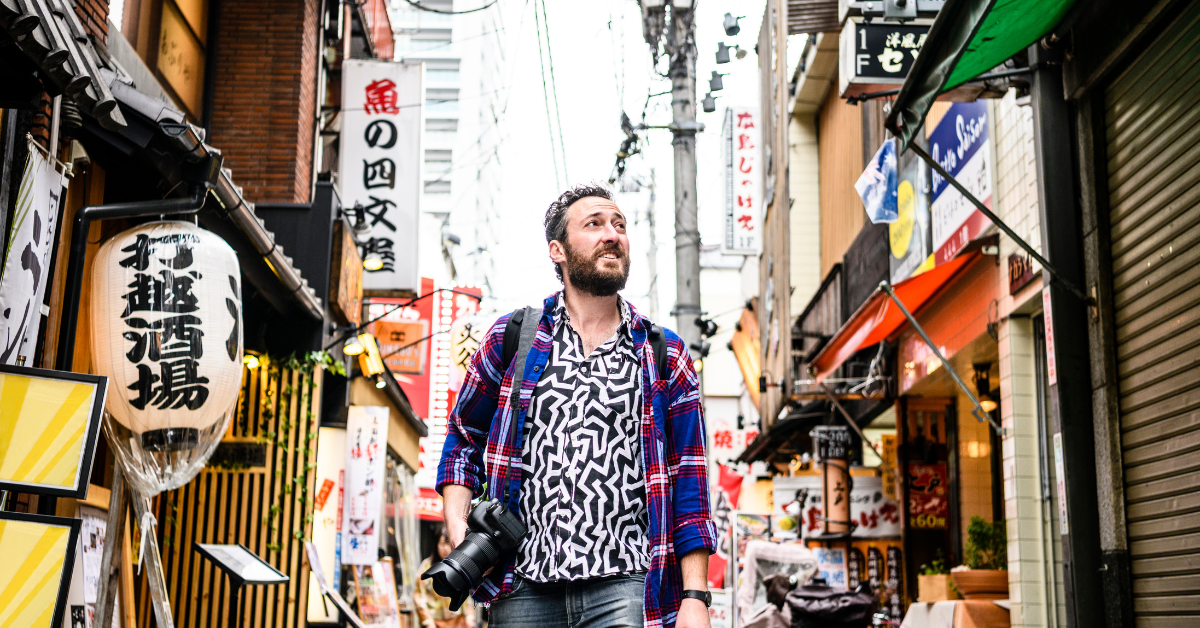
Travelers craving a taste of the modern Tokyo hustle must, of course, experience the notorious Shibuya scramble. Making your way across the world’s busiest road crossing shoulder to shoulder with hundreds of other pedestrians is a rite of passage, and a bracing introduction to the chaotic energy of this district.
Nearby you’ll also find the famous Harajuku fashion quarter. This super-trendy parade of boutiques and emporiums is a catwalk for many of Tokyo’s youth subcultures and their ambassadors. Gothic lolita, kawaii, punk, gyaru (gal, a hyper-feminine style), cosplay of all stripes… the tribes and their aesthetics are endlessly evolving, and this is a great place to catch a glimpse.
After all that fashion and movement, you might need some refreshment to recover – thankfully the Shinjuku district is just a short hop away. This part of town is positively bubbling with bars and eateries along its narrow, neon-soaked backstreets, famously the inspiration for the street set design in iconic sci-fi Blade Runner. An ideal patch for some late-night exploration.
Head east and you’ll find yourself in the heartlands of the Japanese otaku subcultures. Akihabara Electric Town is the vibrant stomping ground of all manner of geeks, nerds and enthusiasts of anime and technology. Immerse yourself in a heady mashup of tech and pop culture, from maid and robot cafes to video game arcades and comic emporiums. Get your geek on!
Top tips:
- For an entirely different perspective, head up to the Shibuya Sky observation platform, where you can take in the mind-blowing reality of what a city of this magnitude looks like at scale.
- For a serene contrast to Tokyo’s bustling energy, participate in a traditional Japanese tea ceremony. It’s a cultural experience that offers a peaceful respite and a deeper understanding of Japanese hospitality and aesthetics.
Best Places to Visit in Japan for Traditional Culture
Kakunodate, Samurai Town
If the hype is anything to go by, samurai TV epic Shogun will be one of 2024’s must-watch shows – and is sure to spark a renewed interest in the iconic figure of the samurai.
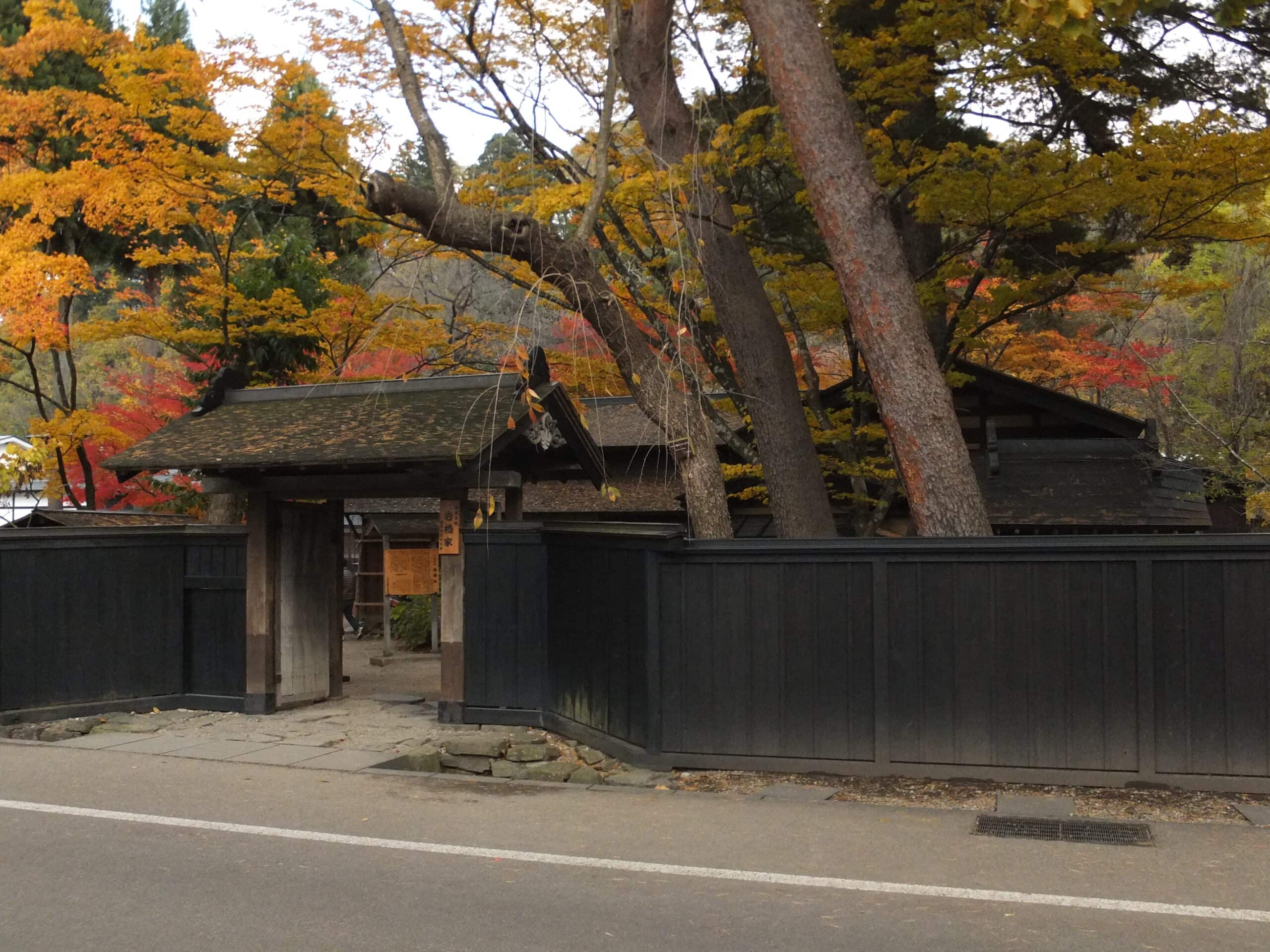
Situated in the northern prefecture of Akita, Kakunodate is one of Japan’s most well-preserved sites for samurai history. Two impressive areas of the town – the samurai and merchant quarters – will transport you back to Edo-period Japan circa 1620, with no less than six heritage houses open to visitors in perfect condition. This includes the Aoyagi House, also known as the Samurai Manor Museum, which boasts a remarkable array of feudal artifacts.
For history buffs, it’s hard to resist; soaking up the atmosphere in Kakunadote’s storied streets is worth the trip alone.
What’s more, if you visit in late April or early May, you’ll witness another archetypal feature of Japanese culture: Cherry blossom season. Thousands of weeping cherry trees line the samurai district, making it one of the finest hanami (cherry blossom viewing) sites Japan has to offer. The trees also reach along the peaceful waters of the Hinokinai River nearby, creating a magical picnic spot beloved of locals and travelers alike.
Top tips:
- While exploring the samurai district, look for the secret gardens hidden behind the walls of the heritage houses. These serene spots are often overlooked but offer a tranquil escape and a glimpse into the private lives of the samurai.
- Don’t leave Kakunodate without trying ‘kiritanpo-nabe,’ a local hot pot dish with pounded rice sticks. It’s a culinary experience that samurai might have enjoyed after a long day of training.
- For a unique souvenir, seek out the cherry-bark crafts, a specialty of Kakunodate since the Edo Period.
Ise, Sacred Shrine
Close to the coastal city of Ise in the central Mie prefecture, you’ll find a truly spiritual destination tucked away among thick greenery. The Inner Shrine, formally known as Kotai Jingū, is renowned as Japan’s most sacred Shinto shrine. For travelers with an interest in the practice and expression of Shinto, this vital place of worship can’t be missed.
Dedicated to the Sun Goddess Amaterasu Ōmikami, the Inner Shrine is over 2,000 years old, predating the arrival of Buddhism in Japan. This is accounted for in its uniquely native architectural style, which shows practically zero influence from other Asian countries.
Starting at the 100-meter long wooden Uji Bridge, you’ll make your way through two majestic torii gates and across the sacred Isuzugawa River.
Reaching the grand wooden facade of the main sanctuary, you’ll then arrive at the heart of this sacred site. The main hall, which houses the Sun Goddess, is submerged in partial darkness. Photography is not permitted here; rather, a pilgrimage or visit to the shrine should be one rooted in tranquil contemplation. Soak up the atmosphere around you and take notice of the space’s architectural features, such as chigi (forked roof finishings) and katsuogi (decorative wooden beams).
Top tips:
- Fancy a spiritual souvenir? The nearby Oharai-machi and Okage-yokocho shopping districts offer a myriad of traditional goods. Look out for the ‘Goshuincho’ – a book for collecting stamps and calligraphy from each shrine you visit. It’s the ultimate keepsake for any spiritual journey.
Best Places to Visit in Japan for Nature
Yakushima, Fairytale Island
Head to Japan’s southern tip and you can visit an emerald-green island paradise that feels like another world.
Yakushima island is one of the most captivating jewels in the country’s natural crown. Its abundance of beauty is carefully conserved, allowing biodiversity to flourish within the island’s array of interconnected landscapes. Perhaps the most striking of these is the forest, where cedars over 1,000 years old can be encountered. Dense green moss carpets the rocks and trees all around.
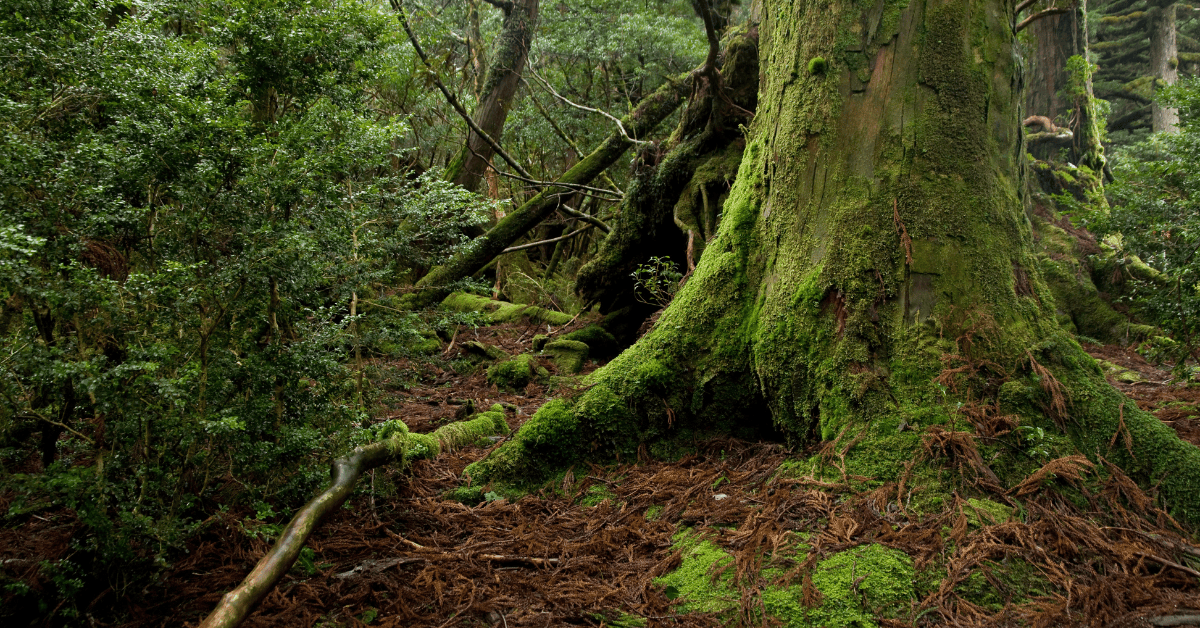
Out of the forests, the hiking trails will also lead you past glorious waterfalls, rocky outcrops, seashores and up to the heights of Miyanoura Peak, where you can enjoy breathtaking views. For forest bathing, or freeform exploration, Yakushima is a remarkable find. Its fairytale quality even inspired Japan’s own modern storytelling, including the brilliant Studio Ghibli film Princess Mononoke.
Top tips:
- Venture to the Oko-no-taki waterfall and make a wish. Local legend has it that the water spirits will carry your desires to the heavens.
- For those who seek treasures, the island’s local markets offer unique crafts made from cedar bark. It’s a piece of Yakushima you can take home with you.
Best Places to Visit in Japan during Winter
Jozankei, Snowy Springs
Japan’s northern island, Hokkaido, is, for many, synonymous with snow – those iconic images of beautiful icy climes and steaming hot pools, perhaps complete with cheeky bathing monkeys, are hard to resist.

Located just an hour from the island’s capital Sapporo, Jozankei Onsen is an onsen (hot spring) town tucked away in a mountainous region that offers particularly gorgeous vistas in autumn and winter. Just imagine taking a rejuvenating steamy bath outside while gazing out at the snowy peaks and valleys of the landscape around you. In Jozankei you can combine a traditional Japanese practice – that of hot bathing – with the rugged beauty of its northern nature.
Away from the bathing, there are also plenty of spectacular spots to explore. Jozankei is home to a petite Buddhist temple called the Iwato Kannondo, which throws expectations by linking up with a cave that plunges 120 meters into the earth.
Top tips:
- If you’re visiting in summer, make sure you don’t miss the Jozankei Nature Luminarie event too. This illumination festival casts captivating colored lights over the forest and rivers, transforming the town into a kaleidoscopic merry-go-round of vibrant lumination.
- Don’t miss out on trying the local specialty, ‘onsen tamago’ (hot spring eggs), which are eggs slow-cooked in the naturally hot waters of the onsen.
- For the full experience, consider staying overnight in a traditional Japanese inn, or ryokan, where you can enjoy the onsen baths at your leisure and indulge in a multi-course kaiseki meal.
Okinawa, Sandy Paradise
From the freezing cold slopes to a steamy subtropical enclave way down south; Okinawa’s reputation as a beautiful natural paradise precedes it, and a visit to this unique fragment of Japan is surely a must for beach lovers who appreciate biodiversity as much as white sands.

The Yanbaru National Park on the island’s northern side is truly remarkable when it comes to natural wonders. Around 1,250 plant and tree species call this patch their home, alongside a spectrum of unique animals such as the long-armed scarab beetle and Okinawa Rail bird. With forest covering nearly 80% of the area, it’s undeniably rich and inspiring.
Away from the forests, you’ll have to get wet to find another of Okinawa’s marvels. The Kerama Islands, among the most beautiful places in Japan, are bursting with marine diversity and an exceptional array of coral reefs. The incredible importance of coral to planetary stability is still being understood, but we know Okinawa boasts about 200 types of this miraculous creature. In turn, the coral sustains rich underwater ecosystems. Sustainable scuba and snorkeling are particularly popular off the shores.
Last but not least, don’t forget to relax. No trip to Okinawa would be complete without digging your toes into the pristine white sands and swimming in its trademark crystal blue waters.
Top tips:
- Try wearing a traditional Ryukyu costume for a unique cultural experience and a great photo opportunity.
- Don’t leave without trying Okinawa’s famous ‘goya champuru’ (bitter melon stir-fry) and ‘taco rice’, a local take on the Mexican taco filling served on rice.
Best Places to Visit in Japan for City Life
Osaka, Futuristic and Full of Choice
For a city of over 19 million, it can be strangely easy for visitors to overlook Osaka as Tokyo’s little sister. However, alongside its status as a longstanding hub of commerce and industry, Osaka offers a huge amount to explore that is distinctly its own.
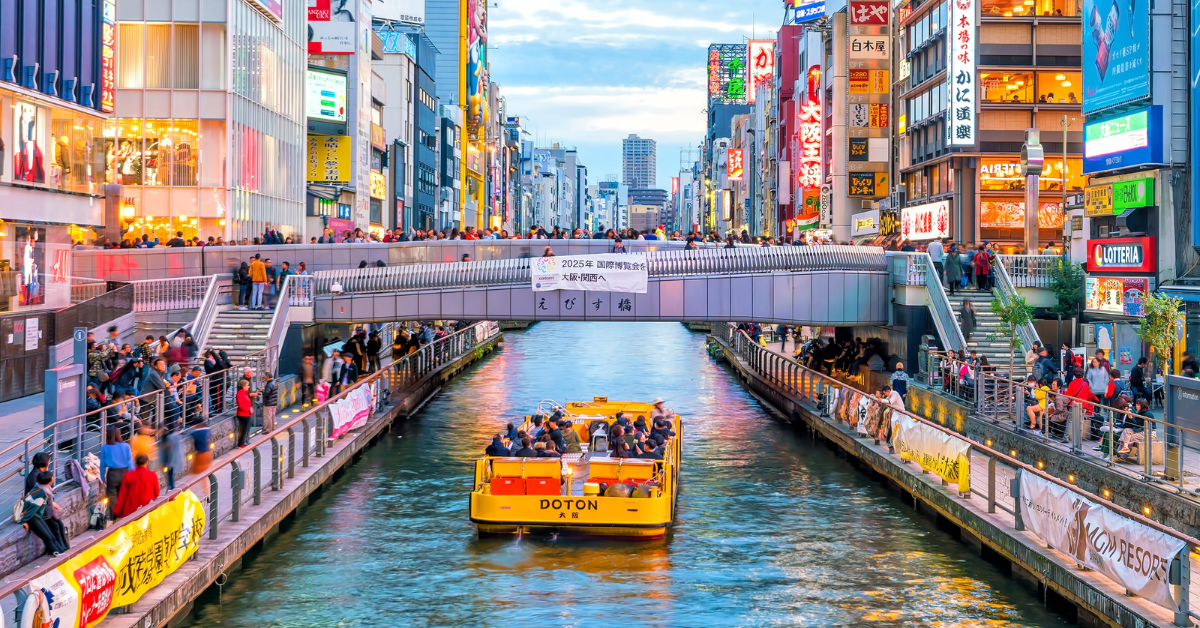
Let’s start by assuming you’re hungry. Dotonbori offers not only one of Osaka’s most famous vistas, with its hypnotic patchwork of neon billboards, but is also one of the city’s food hubs. Whether you’re craving sushi, ramen, takoyaki, udon or something else entirely, you’ll find no shortage of options among this buzzing commercial hotspot.
If you’re looking for a somewhat less polished cultural adventure, check out the Amerikamura district. Like Harajuku in Tokyo, this quarter is Osaka’s subculture hub – but with a scuzzier, more alternative edge. From grimy dive bars to cool coffee shops and record stores, this is the place for lovers of the underground, hip and definitely non-mainstream.
From the anarchic to the futuristic, head to Umeda for a dazzling slice of Osaka’s cutting-edge city energy. Underground, you’ll find an incredible selection of restaurants and bars; overhead you’ll be wowed by hyper modern skyscrapers like the slick Umeda Sky Building. As a transport and business center, Umeda has its finger on the pulse of Osaka’s unfolding future, making it ideal for those who appreciate quality, speed and choice.
Top tips:
- Don’t miss the iconic Osaka Castle, surrounded by a moat and park with plum, peach, and cherry-blossom trees.
- For a panoramic view of the city, visit the Floating Garden Observatory at the Umeda Sky Building.
Kobe, Foodie Hotspot
City travel doesn’t have to be relentlessly high energy – and visiting the smaller city of Kobe might be just the food-focused antidote your trip needs.
Easily accessible from both Kyoto and Osaka, Kobe is a less obvious – but just as interesting – choice for a Japanese city experience. With a downtown area also in close proximity to the mountains and sea, it’s easy to enjoy the best of all worlds here while winding down a little from the megacities.
Kobe is, of course, synonymous with beef, and foodies will find no better example of this super tender dish than here. The best Kobe beef restaurants place emphasis on their sourcing, freshness and high quality while offering myriad styles and variations for you to try.
Kobe’s Nada ward celebrates another Japanese classic – sake. This is one of Japan’s most prestigious and prolific sake production centers, with a long history and pedigree. Taking advantage of the area’s exceptional climactic and environmental conditions, a number of world-class sake breweries can be found here, with tours offering the chance to better understand and enjoy this tasty beverage.
Top tips:
- Away from the table, Kobe also offers a variety of architectural styles, interesting history, amazing mountainside views of the city, heritage onsen bathing and plenty of gorgeous hiking trails, all close to the center.
- Take a stroll in Nunobiki Herb Garden and enjoy the scenic beauty and fragrant herbs in this expansive garden, accessible via the Shin-Kobe Ropeway.
Explore Japan in Style
The list of best places to visit in Japan is extensive and diverse, catering to a wide range of tastes for every traveler. However, exploring a new city can pose challenges, particularly if you’re unfamiliar with the area. Taxis in Japan can be costly, making city navigation an expensive endeavor. That’s why we recommend booking a Blacklane ride in Japan for convenient transportation within town or to and from the airport. Your Blacklane chauffeur can assist not only with language barriers but also with navigating cultural and infrastructural differences upon arrival.
FAQs About Best Places to Visit in Japan
When is the best time to visit Japan?
The best time to visit Japan is typically during spring (March to May) or autumn (September to November). During these seasons, the weather is generally mild and comfortable, with pleasant temperatures and lower humidity levels. Additionally, visiting during these times often means fewer crowds compared to the peak summer months, allowing for a more enjoyable and relaxed travel experience.
How long should I visit Japan?
The duration of your visit to Japan depends on your preferences and itinerary. Many travelers opt for 1-2 weeks to explore the highlights.
What is the best time of year to visit Japan for cherry blossoms?
The best time of year to see cherry blossoms in Japan is usually late March to early April, varying slightly depending on the region.
When is the best time to go skiing in Japan?
The best time for skiing in Japan is typically from December to February, with peak conditions in January.

